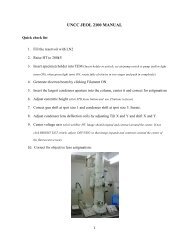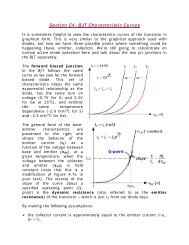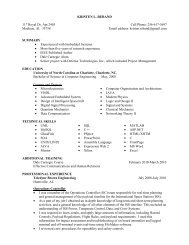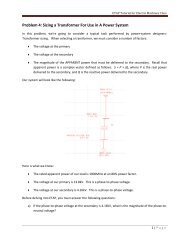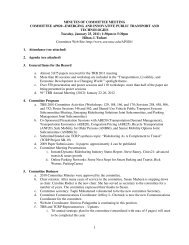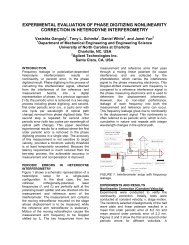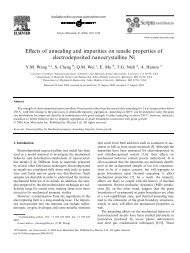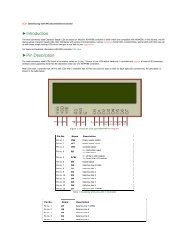Winding Capacitance and Leakage Inductance
Winding Capacitance and Leakage Inductance
Winding Capacitance and Leakage Inductance
Create successful ePaper yourself
Turn your PDF publications into a flip-book with our unique Google optimized e-Paper software.
Transformers designed for switching applications are normally designed to have minimum leakage<br />
inductance, in order to minimize the voltage spikes, as shown in Figure 17-2. Also, leakage inductance can<br />
be observed by the leading edge slope of the trapezoidal current waveform.<br />
'on<br />
Actual<br />
Figure 17-2. Switching Transistor Voltage <strong>and</strong> Current Waveforms.<br />
Transformers designed for power conversion are normally being driven with a square wave, characterized<br />
by fast rise <strong>and</strong> fall times. This fast transition will generate high current spikes in the primary winding, due<br />
to the parasitic capacitance in the transformer. These current spikes, shown in Figure 17-3, are caused by<br />
the capacitance in the transformer; they will always appear on the lead edge of the current waveform <strong>and</strong><br />
always with the same amplitude, regardless of the load. This parasitic capacitance will be charged <strong>and</strong><br />
discharged every half cycle. Transformer leakage inductance <strong>and</strong> capacitance have an inverse relationship:<br />
if you decrease the leakage inductance, you will increase the capacitance; if you decrease the capacitance,<br />
you increase the leakage inductance. These are trade-offs that the power conversion engineer must make to<br />
design the best transformer for the application.<br />
T P Light Load Heavy Load<br />
Current Spike »•<br />
ton<br />
2<br />
ton<br />
-4 »•<br />
^<br />
^<br />
3<br />
ton<br />
•4 »-<br />
^<br />
4<br />
ton<br />
Ideal Actual Ideal Actual<br />
Figure 17-3. Transformer <strong>Capacitance</strong> Induced Current spike.<br />
<strong>Leakage</strong> Flux<br />
<strong>Leakage</strong> inductance is actually distributed throughout the windings of a transformer because of the flux set-<br />
up by the primary winding, which does not link the secondary, thus giving rise to leakage inductance in<br />
each winding without contributing to the mutual flux, as shown in Figure 17-4.<br />
Copyright © 2004 by Marcel Dekker, Inc. All Rights Reserved.




